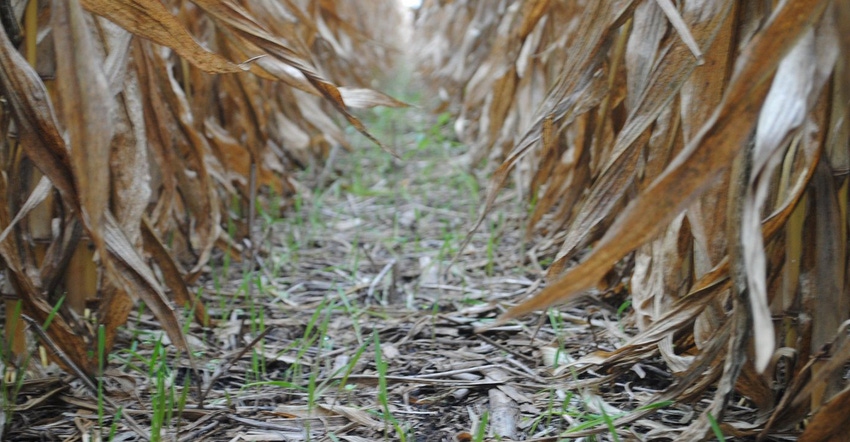
If soil health is a buzzword for farmers these days, cover crops are a major part of the buzz. Nebraska Extension researchers have conducted numerous field studies over the past three years to help producers make decisions about planting cover crops. At a Crop Production Clinic in Norfolk, Roger Elmore, Nebraska Extension cropping systems agronomist, talked about the benefits and challenges of adopting cover crops and some of the research being conducted by UNL.
One study funded by the Nebraska Corn Board and Nebraska Soybean Board looks at implementation of cover crops in corn and soybean systems. Experiments were carried out at four UNL research farms with irrigated trials at Clay Center and Brule, and rain-fed studies at Mead and Concord. Cover crop planting times were tested with seed broadcast early while crops were still growing and then drilled late after harvest. Cover crops were terminated in this study two weeks before planting a subsequent crop of corn or soybeans.
In five different cover crop mixtures studied, not surprisingly, cereal rye produced the most spring biomass, taking over many of the other crops in the mix, Elmore told producers. "There was basically no impact on corn yields at 13 of the 16 locations. However, at UNL Haskell Ag Lab near Concord, corn yields were 10 bushels per acre lower. Soybean yields were not impacted at seven of the eight locations, but were 4 bushels per acre lower after early-planted cover crops in 2015 at HAL.
"Because you have the cost of the cover crop seed, you want basically little to no impact on the crop yields," Elmore said. "So, that is the concern with producers." But cover crop adoption shouldn't be based on the results of a single-year study. The success of the system depends on the goals of the grower, he said.
"If you are a cattle guy and want good grazing, your objectives for cover crops are for production of forage," Elmore said. "Crop growers are interested in crop production, so they don't want to impact yield."
Another study is looking at interseeding cover crops at five different planting times directly into corn at UNL sites in Lincoln and Clay Center. Researchers in these trials simulated aerial seeding, but did not incorporate the seed. These studies look at how biomass production is impacted at planting time of the next cash crop, and how current crops and subsequent crops are impacted by cover crops planted at varied times during the season. Other studies are looking at the impact of cover crops on productivity in a wheat-corn-fallow rotation and evaluating grazing cover crops and annual forages in western Nebraska. Future studies are now being planned for the North Platte, Grant and Sidney areas.
With cover crops, we need to get out of thinking about the short term, said Elmore. "The real question is what changes we can make through cover crops to organic matter," he explained. "This isn't something we can measure yet, because it takes five to 10 years to build up.”
"What value do you place on a pound of soil?" Elmore asked. "We need to consider if we want to protect the soil, increase water infiltration and decrease erosion. We need to think beyond just a profit for this year and look 10 to 20 years ahead."
You can learn more by contacting Elmore at [email protected].
About the Author(s)
You May Also Like






